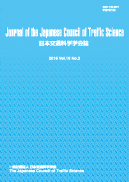Volume 11, Issue 2
Displaying 1-4 of 4 articles from this issue
- |<
- <
- 1
- >
- >|
-
2011 Volume 11 Issue 2 Pages 3-8
Published: 2011
Released on J-STAGE: March 01, 2018
Download PDF (579K) -
2011 Volume 11 Issue 2 Pages 9-17
Published: 2011
Released on J-STAGE: March 01, 2018
Download PDF (1134K) -
2011 Volume 11 Issue 2 Pages 18-24
Published: 2011
Released on J-STAGE: March 01, 2018
Download PDF (1279K) -
2011 Volume 11 Issue 2 Pages 25-31
Published: 2011
Released on J-STAGE: March 01, 2018
Download PDF (939K)
- |<
- <
- 1
- >
- >|
